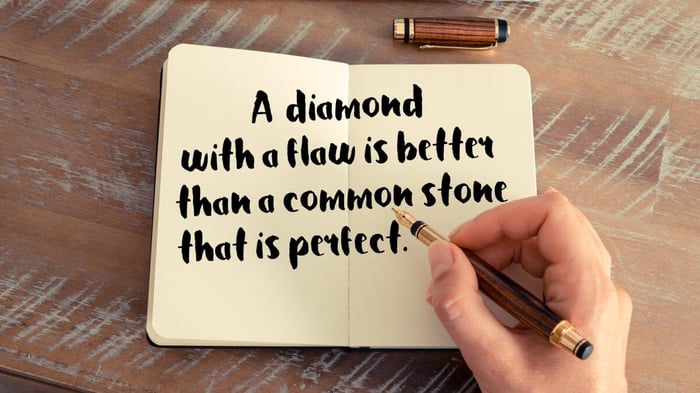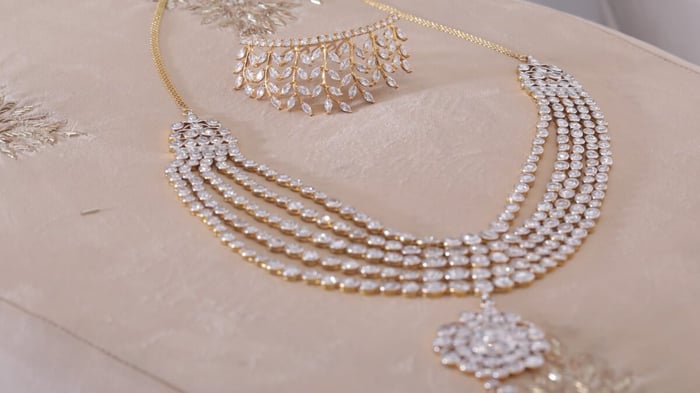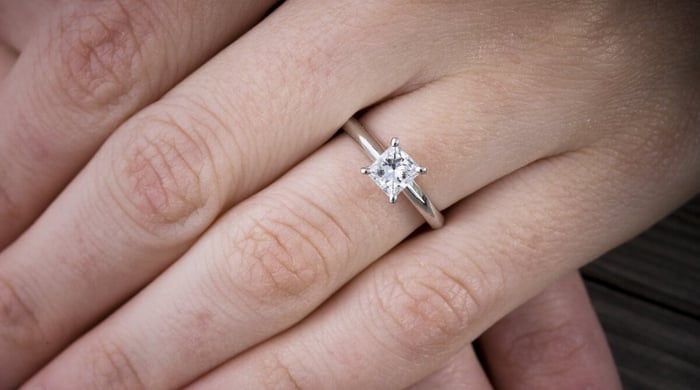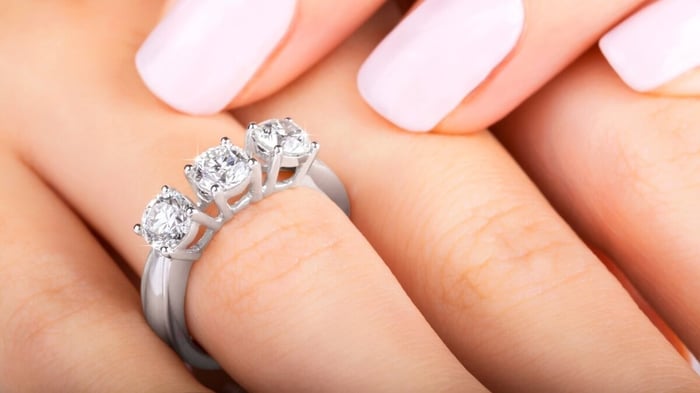Diamond Flaws And Inclusions
Diamonds are formed over millions or even billions of years deep within the Earth under colossal pressure and high temperatures. Each diamond is unique, and no diamond is entirely pure and without flaws, even under 10x magnification.
In this article, we look at some of the flaws and inclusions within diamonds and how they affect the clarity, brilliance and sparkle of your diamond jewellery.
Internal Diamond Flaws
When inclusions exist in a diamond, it is an imperfect gemstone. The formation of the diamond was flawed in some way, or the stone did not form correctly. The average person is not likely to notice defects and inclusions in a diamond, and you should not be concerned about the very few imperfections and inclusions present in most diamonds.
There are very few diamonds that can be called "perfect,". A flawless clarity grading report would be issued to such diamonds, which indicates that even under 10x magnification, no flaws or imperfections can be seen in the stone. These kinds of diamonds are extremely hard to come by and command astronomical prices. The chances are that most jewellers have never seen a flawless diamond!
The clarity of the diamond may be diminished if it contains flaws called inclusions, which prevent light from travelling freely through the stone, affecting its light performance and, thus, appearance. The presence of a few minute inclusions can give a diamond an appearance that is rather lacklustre, with less brilliance and sparkle than buyers expect.
Many of these defects and inclusions are amenable to being minimised or hidden by using various treatments that gemologists and jewellers have acquired over many years.
The flaws and inclusions in the diamond may be significant enough to cause the gemstone to be fragile. The stone may fracture or break considerably more easily than it would if it did not have flaws. These are the defects you want to avoid at all costs because they lower the value of the stone you are planning to buy.
€703,95
Un clásico atemporal, este anillo de compromiso de diamantes sería una excelente opción para plantear la pregunta y seguirá deleitando y brillando durante muchos años. El diamante de calidad E/VS de 0,20 quilates brilla desde el centro del anillo y… read moreAnillo de compromiso con solitario de diamante certificado de 0,20 ct de calidad E/VS en platino
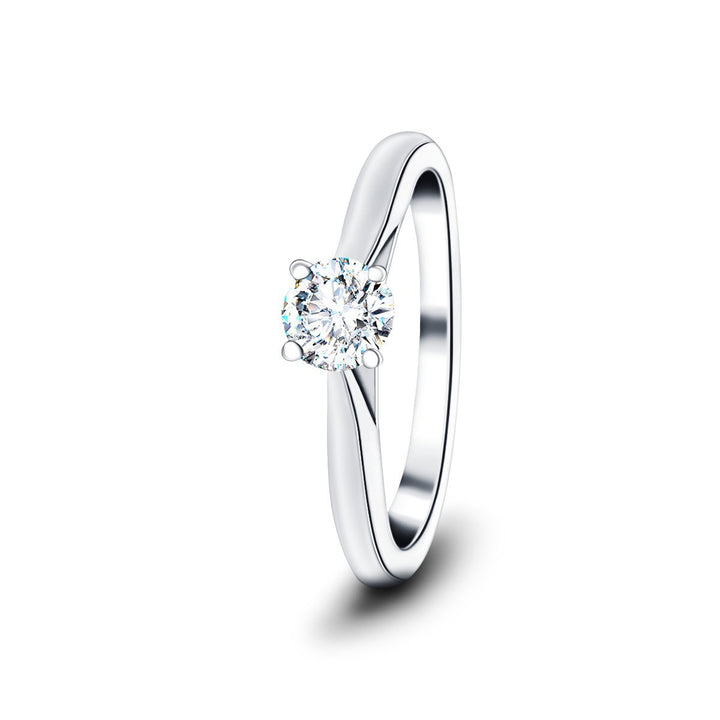
Pinpoint Inclusions
One type of imperfection in a diamond is known as pinpoint inclusion. Pinpoint inclusions occur when the stone has tiny, black crystals that are either grouped together or dispersed throughout the diamond. Imagine for a moment that the stone is composed entirely of dense clumps of dark crystals. In such a scenario, the diamond's clarity is diminished, and the stone will give the impression of having a "cloud" within it. This particular imperfection in a diamond can significantly impact the gemstone's appearance, which can reduce the diamond's value.
Graining
Internal graining is characterised by the formation of crystals in an uneven pattern, which can cause the appearance of milky or hazy lines or streaks. They can also provide the appearance of creases or reflections; however, this depends on how severe they are.
Mineral and Crystal Inclusions
Most imperfections and inclusions in diamonds are considered to be defects. However, there are occasions when these characteristics can actually serve to draw attention to the beauty of your diamond. Diamonds, for instance, generally contain smaller crystals within the diamond itself, which are frequently so minute that they cannot be seen without magnifying gear. These crystals have the potential to distort the transparency of the diamond. When there are a sufficient number of crystals clustered together in one region of the diamond, it is possible to see them.
A few rare instances exist when the crystals are large enough to be considered a gemstone within the diamond. For example, if you had a ruby or emerald surrounded by a diamond, you would see that as a unique piece of jewellery- not a flawed one! These rarities could not be seen as a diamond flaw or inclusion.
€5.890,95
Un quilate completo de diamante centelleante, hecho a mano con amoroso cuidado y engastado de forma segura en lujoso platino para producir un brillo seductor en la mano de su amada. Garantizado para toda una vida de belleza y romance,… read moreAnillo de compromiso con solitario de diamante certificado de 1,00 ct de calidad E/VS en platino
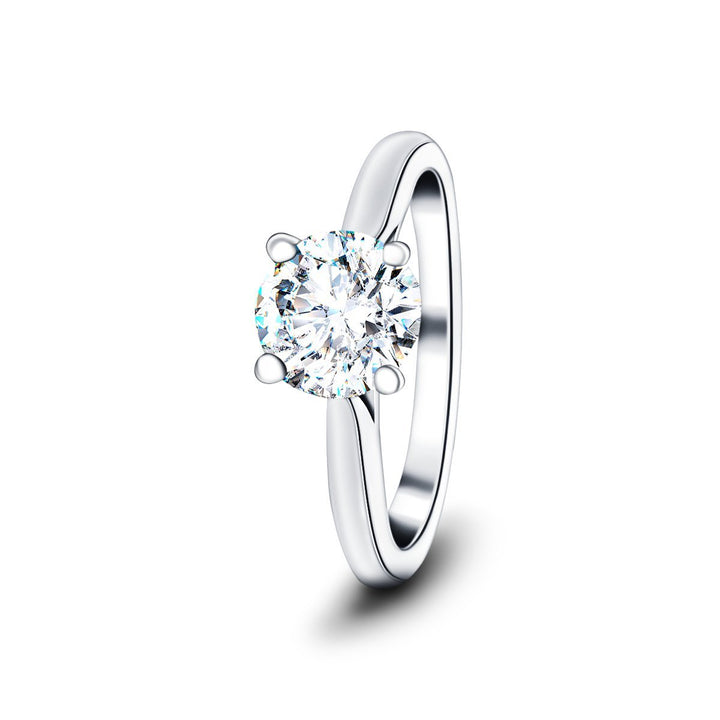
Feathering
A feather is a tiny crack or fracture that runs through the interior of the diamond. Depending on the perspective from which you view it, a feather inclusion may appear clear and practically unnoticeable, or it may reflect light and give the impression of having a feather-like appearance.
Both severe feathers and feathers with unpleasant colouration should be avoided since they can cause problems with the item's durability, especially if large feathers reach the surface or are close to the girdle.
Laser Treatments And The Problems They Cause
Almost as soon as the laser was invented in 1958, the potential of lasers to improve diamond quality was recognised. By the late 1960s, lasers began to be utilised in a commercial setting to enhance the overall quality of diamonds.
There is no doubt that laser treatment of diamonds to remove internal flaws to improve clarity is a benefit in most cases. But laser use can leave traces that can be seen. Most diamond grading laboratories, including the GIA, will note the use of laser treatment in their reports.
Sometimes, when lasers are used to cure an imperfect diamond to remove black diamond imperfections and inclusions from within the gemstone, a line is left through the diamond that appears very much like a thread. This line can be seen in some diamonds. The beginning of the laser line can be found at the surface of the diamond. It advances inside until it reaches the region of the dark inclusion treated by the laser. Most people can spot these imperfections and inclusions in a diamond, making it less desirable because of its appearance.
€5.902,95
Nuestro anillo de compromiso con solitario acentúa elegantemente la piedra central con una banda amarilla de 18k. Este hermoso anillo hecho a mano en oro amarillo de 18k presenta diamantes éticos de calidad E/VS y pesa un total de 1,00… read moreAnillo de compromiso con solitario de diamante certificado de 1,00 ct de oro amarillo de 18 quilates de calidad E/VS

How To Protect Yourself Against Buying A Badly Flawed Diamond?
Spotting internal flaws in a diamond is not easy. Unless the flaws are very bad, it will require trained skills and good lighting and magnification. Comparing two diamonds is even harder, given that it is usually not possible for consumers to examine diamonds outside of the setting of the diamond and next to each other.
To help jewellery buyers, the Gemological Institute of America (GIA) has devised a standardised system for describing the quality of diamonds known as the 4Cs. This system is now applied almost universally in the diamond trade worldwide.
The GIA grading system uses eleven grades considering the size, type, position, colour and number of flaws under 10x magnification. The 4Cs are Colour, Clarity, Cut and Carat weight. The clarity grade is the description of the internal quality of a diamond.
The grades, taken here from the GIA website, https://www.gia.edu/gia-about/4cs-clarity, are as follows:
Flawless (FL) - No inclusions or blemishes are visible to a skilled grader using 10× magnification
Internally Flawless (IF) - No inclusions and only blemishes are visible to a skilled grader using 10× magnification
Very, Very Slightly Included (VVS1 and VVS2) - Inclusions are difficult for a skilled grader to see under 10× magnification
Very Slightly Included (VS1 and VS2) - Inclusions are minor and range from difficult to somewhat easy for a skilled grader to see under 10x magnification
Slightly Included (SI1 and SI2) - Inclusions are noticeable to a skilled grader under 10x magnification
Included (I1, I2, and I3) - Inclusions are noticeable under 10× magnification and may affect transparency and brilliance
At All Diamond, we regard the SI grades, SI1 and SI2, as a sweet spot in terms of clarity. In most cases, an SI-graded diamond will, in normal circumstances, be tough to tell apart from the higher-graded diamonds. The better the clarity grade, the rarer such diamonds are and thus more costly.
At the SI clarity level, buyers cannot see imperfections, and any flaws have little or no effect on the brilliance or sparkle of the diamond. The price of such diamonds is significantly lower than higher clarity graded gemstones, making them a good value proposition in most types of diamond jewellery.
€5.902,95
¡Diga adiós al mismo viejo estilo de anillo de compromiso! Con este anillo de diamantes solitario, tiene garantizado un anillo de compromiso de diamantes exquisito que es tan único como usted. El diamante solitario de grado E/VS de 1,00 quilates… read moreAnillo de compromiso con solitario de diamante frotado certificado 1,00 ct E/VS Oro amarillo de 18 k
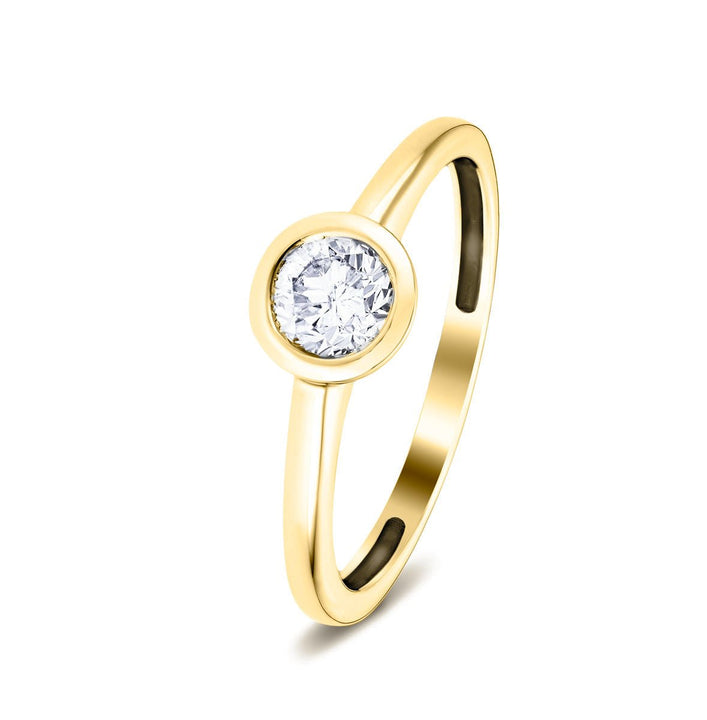
Ask For A Diamond Grading Report
Ask for the diamond grading report if you buy diamond jewellery with a centre stone of one carat or larger. The report will tell you about all the diamond flaws and inclusions. The larger a diamond is, the more noticeable the effect of flaws and inclusions becomes. Offering a grading certificate is not usually economically viable for diamonds smaller than one carat. However, we offer grading reports with our range of certified diamond jewellery.
A Final Word About Diamond Inclusions
Take care to buy jewellery with diamonds offering a clarity grade of SI or better; you should be OK. In most cases, inclusions are not something that should be too big of a concern for most diamond jewellery buyers. When you buy from online stores such as All Diamond, you can check the jewellery in your home for 30 days after receipt. You can return or exchange the item if there is a quality issue.
Ask for a diamond grading report if the diamond in your jewellery is larger than one carat, or choose from our collection of certified diamond jewellery.
Enjoy the uniqueness of your jewellery, flaunt the beauty of your diamonds and enjoy the pride of ownership of All Diamond fine jewellery! Remember that diamonds are natural products (except for lab-created diamonds). Every diamond is unique and carries its own 'birthmarks'.
